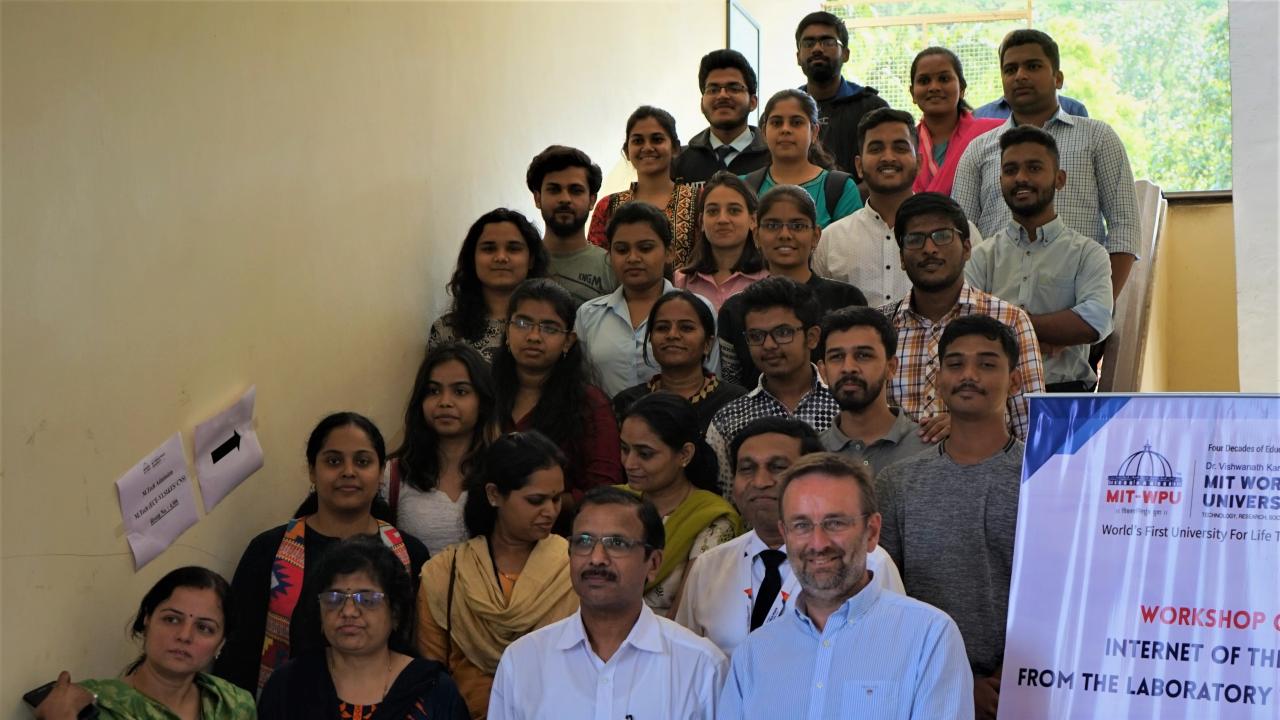
Wireless communications involving connected objects and machines, the so-called Internet of Things (IoT), and machine to machine (M2M) technologies, is a fast-growing field that produces an enormous amount of data. The transmission and management of this data usually require a sturdy power supply and broadband internet connections. This makes it challenging for developing countries to adopt IoT and M2M technologies, as they often lack the necessary infrastructure and economic resources.
To address that challenge, ICTP scientist Marco Zennaro and ICTP Simons Associate Bharat Chaudhari (MIT World Peace University, Pune, India) have written a book on “LPWAN Technologies for IoT and M2M Applications”, published recently by Elsevier, in which low power and low-cost solutions are proposed.
Low power wide area network (LPWAN) technologies are an interesting option for allowing long-range communications at a low bit rate among objects and machines, and could be therefore applied to IoT and M2M technologies even in countries with less resources available. LPWAN networks can operate in a long range of up to 10 kilometres in urban or rural areas and can still be effective in difficult settings such as underground locations. Moreover, these technologies are designed to optimize power consumption, using small and cheap batteries that can last for up to 20 years. These features add to the fact that they are run with simple and lightweight protocols on simple hardware designs, making it possible to reduce infrastructure requirements and therefore the overall costs.
The book is a collection of contributions from international experts in the field that describes the various aspects and applications of this wireless communication network, designed to have fundamental features, such as wide coverage, low hardware costs and long battery life. Contributions include pieces written by scientists from developing countries, which are rarely represented in technical books of this kind.
The collaboration between Zennaro and Chaudhari started in 2005, during a workshop on wireless technologies for South Asian countries, at the International Institute of Information Technology in Pune, India. The collaboration continued with another workshop in 2010 on wireless sensor networks, the first of this kind in India. Fifteen years from their first meeting, Zennaro and Chaudhari still work together, as Chaudhari regularly visits ICTP’s Marconi Wireless | T/ICT4D Laboratory.
“We decided to write this book because LPWAN technologies are the most promising solution for developing countries,” said Zennaro, “as they allow for a long-distance reach even with a low energy requirement.”
This kind of technology can be used for a wide range of practical applications. In general, for developing countries, applications in the fields of agriculture and healthcare have a great potential, thanks to the technology’s high scalability and low device and deployment costs.
“Over the years, we have learned that, given this technology, each country finds the applications that suit its needs the most, to solve specific problems,” said Zennaro. “In India, for example, a very interesting application is traffic management, since big-city centres are often very busy. Or in the northern part of the country, it is crucial for monitoring landslides.”
Another important advantage of having access to these low-cost networks is their applications to development and research, giving local scientists access to cheap and versatile technologies. “Given the lack of funds for expensive scientific instruments, the development of low-cost instruments based on the IoT is an incredible resource,” said Zennaro. “There are already concrete examples of low-cost weather stations, sensors for measuring the air quality, and so on. In this way the local scientific community can finally have access to measures and data about phenomena that concern their own country.”
For the current COVID-19 pandemic, the use of LPWAN technologies could be a useful resource. As medical researchers look for cures and vaccines and a great portion of the world population is under lockdown, one of the main problems is to practice social distancing to try and contain the spread of the infection. “This technology can very easily be employed to monitor the number of people who are in crowded places like airports or stations, but still respecting their privacy,” explained Zennaro. The way it works allows to register the number of mobile phones present in a place at a certain time, without tracking individual cell phone’s data. “IoT technologies are also widely used for health device maintenance,” added Zennaro. “Using sensors, one can understand if a certain machine is working properly or if it requires upkeep before starting to malfunction or break up.”
Moreover, thanks to its high scalability, flexibility and low setup costs, LPWAN technologies could be applied extensively on a wide scale in many countries, according to the ever-changing needs of a situation in continuous evolution, such as the current pandemic.
---- Marina Menga
















